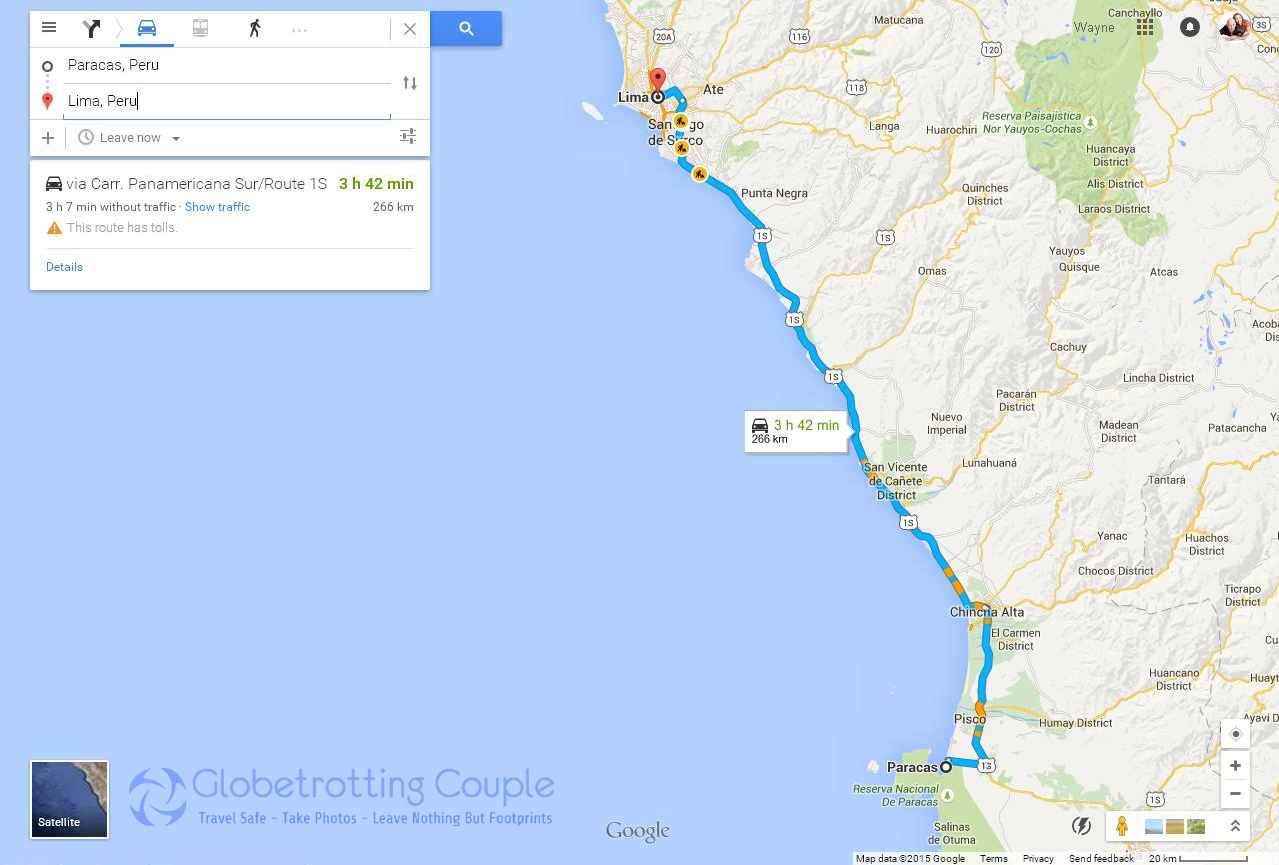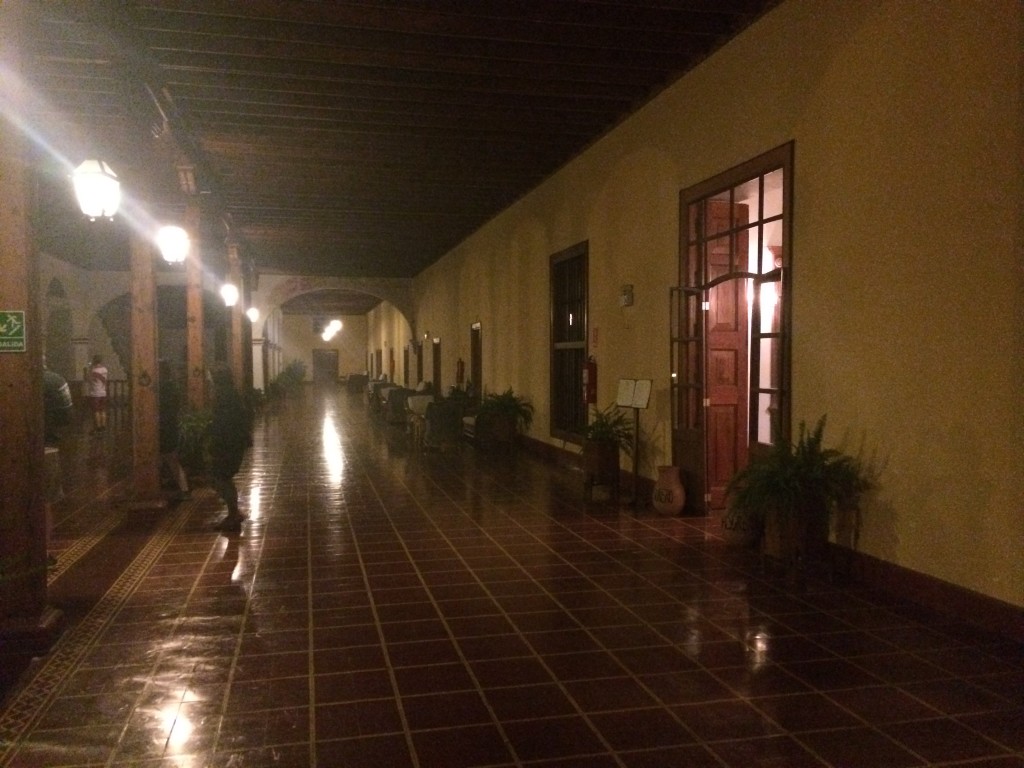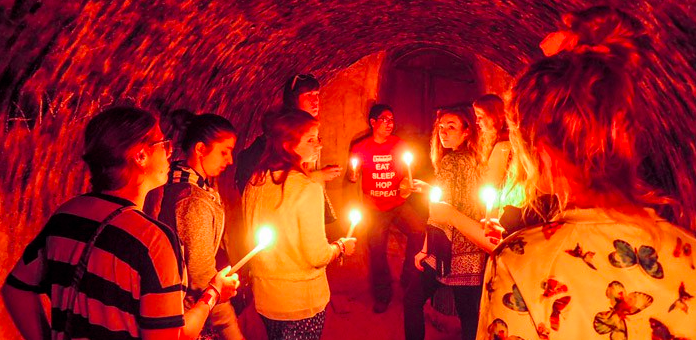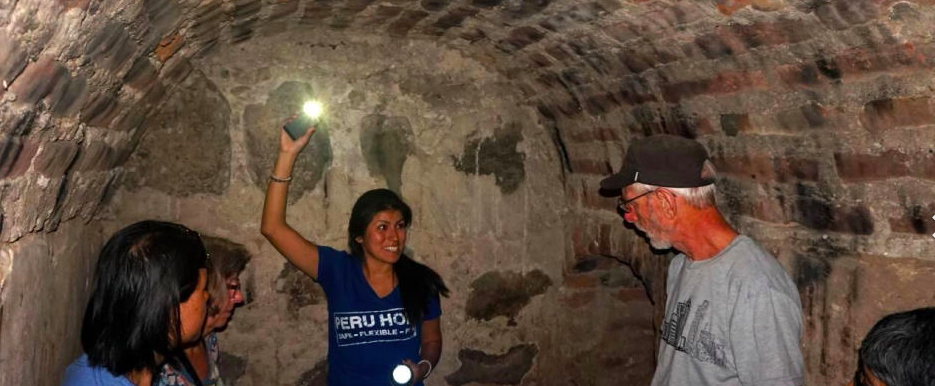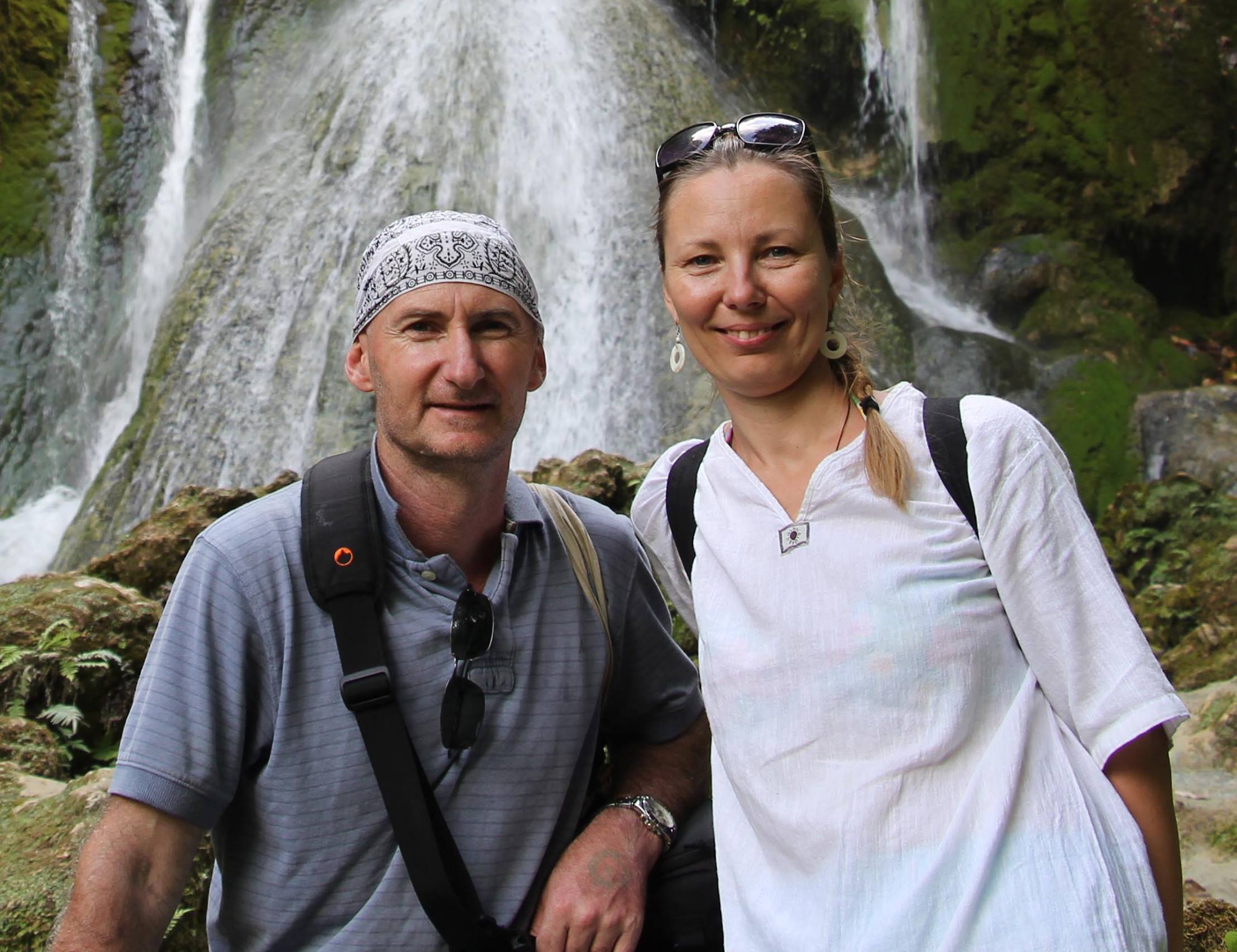It’s dusk as we set off from Paracas. The effects of last nights stomach ache are suppresses with medication and I’m feeling better as we make tracks toward the largest city in Peru. Lima plays host to over 10 million people and it’ll be the largest place we visit in South America.
Before we reach Lima our guide wants to take us to Hacienda San Jose and the secret slave tunnels. This place is an old mansion that was once one of the richest places homesteads in the area. This home was once a large cotton plantation. During its peak production this property head over 1000 slaves they were all kept in secret message underground tunnel system. There is over 40 km of tunnels that connect to large plantation homesteads with the port. The slaves were smuggled from the port illegally through these tunnels to the homesteads, this way they could avoid any attention from authorities and hide the number of slaves they were using on the plantation.
It’s an eerie feeling moving through the tunnels knowing that some 1000 slaves live the lives here in total darkness.
The lights of Lima loomed ahead as we rolled into the city. It was incredible to see the contrasts of the small towns versus the large city. In the city the buildings are completed in the villages most houses look like they’re under construction and have been for many years.
This was to be our last stop in Peru, yet so had a few surprises for us.
History:
Built at the end of the 17th century, Hacienda San Jose used to be one of the main haciendas across the Peruvian coast. Not only famous for its sugarcane production, the number of slaves that worked at the hacienda turned it into the most prosperous plantation at that time. Today, the hacienda is used as a tourist hotel and resort where many vestiges and artefacts show how the Afro-Peruvian immigrants used to live in this part of Peru. However, it isn’t the Hacienda or what surrounds it that makes it such an interesting place, it’s what is found below the Hacienda that is simply amazing and makes it such a unique place.
After entering a hidden secret staircase, you will go down some tiny and narrow stairs underneath the Hacienda to find underground secret slave tunnels. The tunnels connect Hacienda San Jose with four other Haciendas in the region, as well as connecting the hacienda’s to a port about 17 km away.
Information:
By the 18th century, the Hacienda had vast quantities of land where good quality cotton and sugar was being grown. Cheap labour was needed so the families living in the hacienda’s paid for slaves to be brought over from Africa and then forced the slaves to work the land, picking cotton and other agricultural products. At the time, slavery was legal in Peru, so to avoid paying import taxes to the government the owners of the Hacienda’s created underground tunnels linking the houses to the port. The slaves would arrive in late at night to be smuggled into the hacienda via the underground tunnels, meaning the government would have no registration of the slaves in their system and the slave taxes could be avoided. Because of the large number of thieves and pirates sailing the Pacific Ocean at the time, the tunnels were expanded to create a number of secret escape routes thoughout the house. These links the owner’s bedroom, the local church and various other rooms with the tunnel system found underneath. The tabernacle in the church – a box-like vessel usually used to store bread and wine for the consecrated Eucharist – was opened up to be made into one of the secret entrances to the slave tunnels.
When slavery was abolished by Ramon Castilla, the tunnels were used as burial grounds for some of the workers who died on the land. Most of the deaths were caused from the harsh punishments dealt out by the notorious owners. In the 2007 Pisco and Chincha earthquake, a new entrance to the underground tunnels was discovered after part of the floor collapsed. Two groundwater deposits were also revealed.
